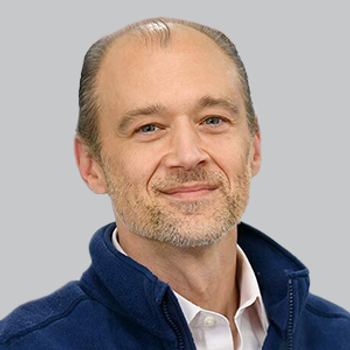
Perampanel Demonstrates High Real-World Retention Rates, Consistent Safety
The 50% responder rate was 58.3% at 12 months and 50.0% at the last visit, with corresponding seizure freedom rates of 23.2% and 20.5%, respectively.
Recently published results from the PERMIT study, a pooled analysis of 44 real-world studies, demonstrated that perampanel (Fycompa; Eisai) is effective and generally well-tolerated in patients with focal or generalized epilepsy. With more than 5000 patients with epilepsy (PWE) included in the cohort, PERMIT remains the largest pooled analysis of perampanel clinical practice data to date.1
Senior author Eugen Trinka, MD, MSc, FRCP, chairman, Department of Neurology, Paracelsus Medical University Salzburg, and colleagues assessed outcomes such as retention, effectiveness, 50% responder rate, seizure freedom rate, and rates of worsened seizure frequency among a cohort of 5193 PWE treated with perampanel. Safety and tolerability information, evaluated by number and types of adverse events (AEs), was also included, as well as AEs leading to discontinuation, psychiatric AEs, and psychiatric AEs leading to discontinuation.
Perampanel, a therapy approved as both a monotherapy and adjunctive use in pediatrics with partial-onset seizures with or without secondarily generalized seizures, showed profound retention rates across a 1-year stretch. At 3, 6, and 12 months, the retention rates were 90.5%, 79.8%, and 64.2%, respectively. Additionally, the mean retention time on perampanel was 10.8 months (95% CI, 10.6-10.9) and 14.3% (600 of 4201) of patients discontinued over the 12-month period because of AEs.
"Over 50% of PWE responded to [perampanel] therapy, including those with status epilepticus, and almost a quarter of PWE were seizure free for at least 6 months after 12 months of treatment," Trinka et al wrote. "These findings complement evidence from clinical trials, further supporting the use of [perampanel] for the treatment of both focal and generalized epilepsy."
READ MORE:
Lack of efficacy (8.8%; 368 of 4201), both AE and lack of efficacy (3.3%; 139 of 4201), seizure worsening (1.2%; 49 of 4201), other reasons (0.8%; 34 of 4201), and unknown (7.5%; 313 of 4201) rounded out other reasons for perampanel discontinuation. A total of 29.5% (1229 of 4164) of patients retained perampanel treatment for longer than the prespecified 12-month period.
Among 1896 PWE, 96.3% (n = 1825) presented having had at least 1 seizure in the past 3 months. At the last visit, investigators observed a monthly seizure frequency of 0.7 (mean, 7.3 [standard deviation (SD), 22.2]; range, 0-300) compared to 3.0 (mean, 17.2 [SD, 60.6]; range, 0.1-1120.0) at baseline. These data correlated to a 57.3% mean reduction from baseline (median, 75%). Notably, the percentage of individuals with focal seizures decreased significantly from 71.8% at baseline to 51.9% at the last visit (McNemar’s test; P <.001).
There were also significant decreases in the frequency and proportions of PWE with focal aware seizures, focal impaired awareness seizures, and focal to bilateral tonic-clonic seizures. Additionally, the percentages of PWE with primary generalized seizures, primary generalized tonic-clonic seizures, absence seizures, and myoclonic seizures were all shown to have decreased at final visit.
Responder rate, where response was defined as seizures under control, was 58.3% and 50.0% at the 12-month and final visit periods, respectively. At the same time, seizure freedom rate was 23.2% and 20.5%, with 195 PWE presenting with no seizures at every recorded time point during follow-up. Among a subgroup of 74 PWE with status epilepticus, 52.7% (n = 39) responded to perampanel treatment.
Worsened seizure frequency was generally stable at all timepoints of the study, with 6.6% and 10.1% of patients experiencing worsened seizure frequency at 12 months and last visit, respectively. Among those with focal seizures, the worsened seizure frequency was 7.6% at 12 months and 11.2% at the last visit.
Overall, 49.9% of the cohort reported experiencing AEs at some point during follow-up, the most frequent being dizziness/vertigo (15.2%). Other commonly reported AEs included somnolence (10.6%), irritability (8.4%), behavioral disorders (5.4%), instability/ataxia (4.1%), and fatigue (3.7%). Notably, those who used fast perampanel titration had significantly higher incidence of AEs compared to those for whom a slow transition was used (61.9% [646 of 1043] vs 46.4% [295 of 636]; X2 = 9.36; P = .002).
In total, 21% of the cohort experienced psychiatric AEs. Additionally, investigators observed a significant association between these AEs and the presence of previous psychiatric comorbidity (X2 = 52.43; P <.001). The most frequent psychiatric AEs in those who discontinued treatment due to AEs were irritability (3.1%), behavioral disorders (2.8%), and mood disturbances (1.1%). No cases of homicidal ideation were reported.
Initially, perampanel was approved in 2012 as an adjunctive therapy for POS, and the indication was later expanded to include patients 12 years of age and older with primary generalized tonic-clonic seizures. In 2017, perampanel received a monotherapy indication for POS with or without SGS in those with epilepsy 12 years of age and older. The
REFERENCE
1. Villanueva V, D’Souza W, Goji H, et al. PERMIT study: a global pooled analysis study of the effectiveness and tolerability of perampanel in routine clinical practice. J Neurol. Published online August 24, 2021. doi: 10.1007/s00415-021-10751-y
2. Eisai Announces FDA Approval of FYCOMPA in Pediatric Patients as Young as 4 Years Old for the Treatment of Partial-Onset Seizures. News release. Eisai Inc. September 28, 2018. Accessed September 1, 2021. https://www.prnewswire.com/news-releases/eisai-announces-fda-approval-of-fycompa-in-pediatric-patients-as-young-as-4-years-old-for-the-treatment-of-partial-onset-seizures-300721117.html.
Newsletter
Keep your finger on the pulse of neurology—subscribe to NeurologyLive for expert interviews, new data, and breakthrough treatment updates.



































